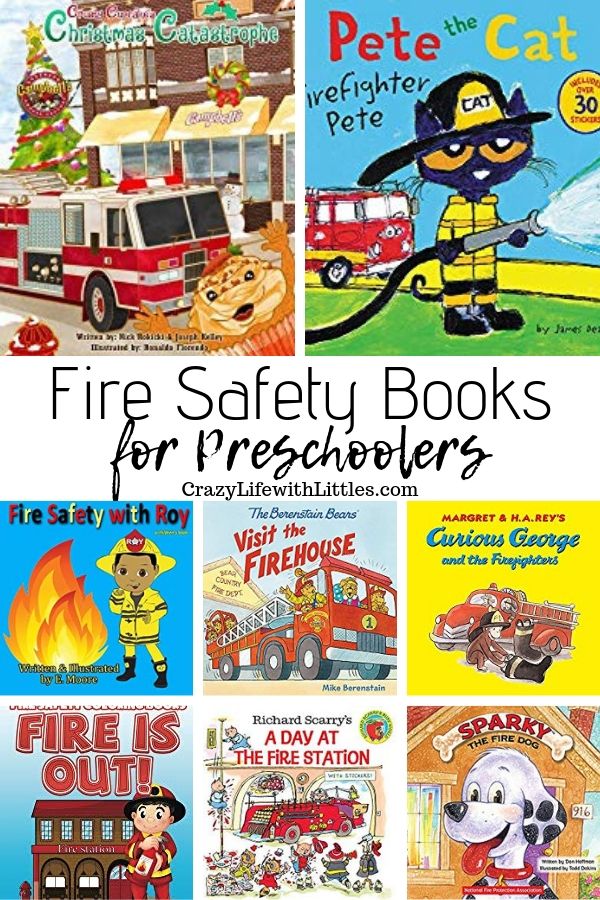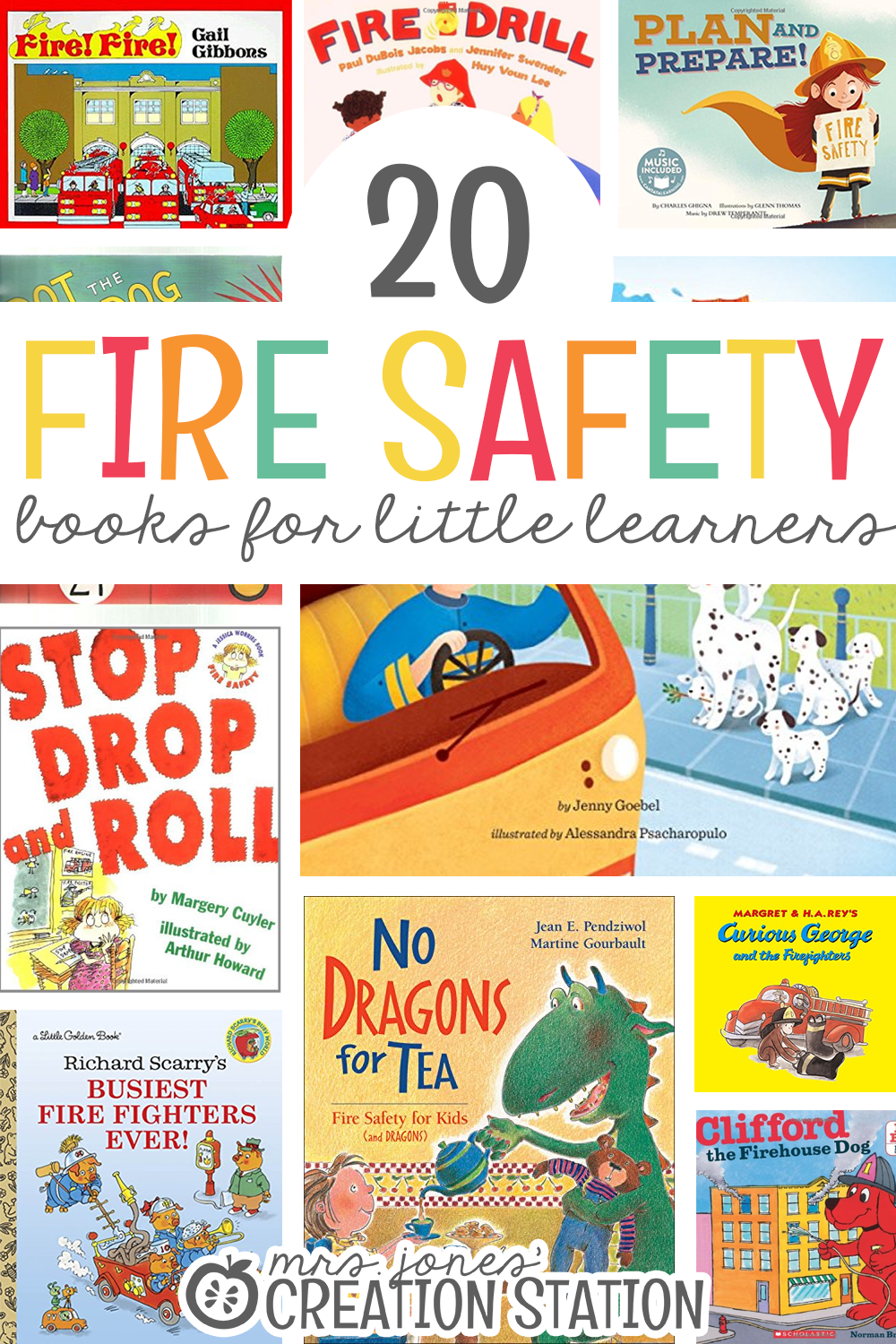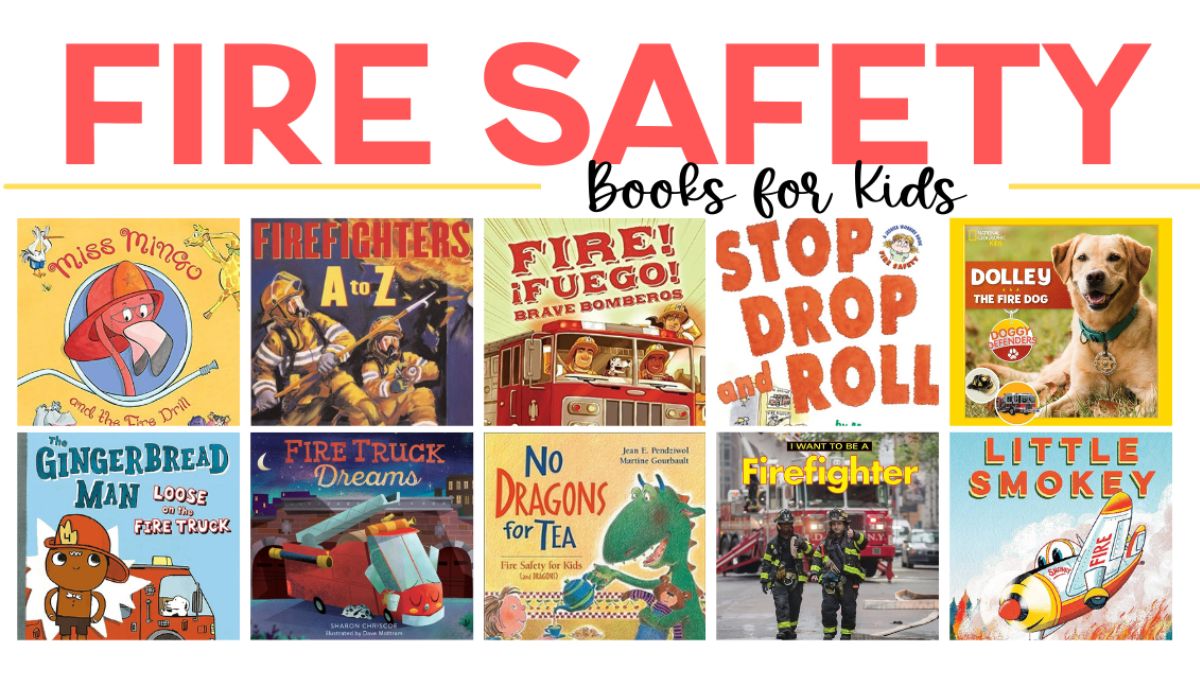Books about fire safety provide essential information on preventing fires and ensuring safety. They are valuable resources for both children and adults.
Fire safety books cover crucial topics like fire prevention, emergency procedures, and the proper use of fire extinguishers. These books often include practical advice, illustrations, and step-by-step guides. For children, fire safety books use engaging stories and colorful images to teach important lessons.
Adults can find detailed manuals that address workplace safety, home fire prevention, and emergency planning. Reading these books enhances knowledge and prepares individuals to handle fire-related emergencies effectively. They are indispensable tools for fostering a safe environment at home, school, and work. Investing time in reading fire safety books can save lives and property.

Introduction To Fire Safety Literature
Fire safety literature helps educate people about preventing and responding to fires. These books cover various topics like fire prevention, escape plans, and the use of fire extinguishers.
Importance Of Fire Safety Books
Fire safety books are essential for everyone. They teach important safety measures and can save lives. Understanding fire safety reduces the risk of fire-related accidents.
- Fire safety books help in educating kids and adults.
- They provide step-by-step guides on fire escape plans.
- Many books include stories that highlight the dangers of fire.
Target Audiences
Fire safety literature targets various audiences. Each group benefits from specific information tailored to their needs.
| Audience | Focus |
|---|---|
| Children | Simple fire safety rules and engaging stories. |
| Adults | Detailed escape plans and fire prevention tips. |
| Professionals | Advanced fire safety techniques and protocols. |
For children, fire safety books use simple language and pictures. These books teach kids how to react in case of fire. Adults get more detailed information on fire prevention and emergency plans. Professionals read about advanced techniques and protocols.
Children’s Fire Safety Books
Teaching kids about fire safety is crucial. It helps them understand the dangers and know how to react. Children’s fire safety books make learning fun and engaging. They use stories, activities, and colorful illustrations to keep kids interested. Here are some top picks under different categories.
Engaging Storybooks
Storybooks can capture a child’s imagination. They can teach them important lessons without being scary. Here are some examples:
- Sparky the Fire Dog – Sparky teaches kids about fire safety through adventures.
- No Dragons for Tea – This story tells about fire safety in a fun way.
- Stop, Drop, and Roll – Kids learn the basics of fire safety with fun characters.
These books use simple language and bright illustrations. They make learning about fire safety enjoyable.
Interactive Activities
Interactive books keep children engaged. They involve kids in the learning process. Here are some examples:
| Book Title | Description |
|---|---|
| Fire Safety for Kids | Includes quizzes and puzzles to test fire safety knowledge. |
| Firefighter Frank’s Fun Book | Has coloring pages and mazes related to fire safety. |
These activities make learning hands-on. Kids can apply what they read in real situations.
Using storybooks and interactive activities together is effective. They provide a comprehensive learning experience. Kids stay engaged and retain important fire safety tips.
Fire Safety For Teens
Fire safety is a crucial topic, especially for teens. They need to understand the importance of fire prevention and how to act in emergencies. Books about fire safety can provide valuable knowledge in an engaging way. Here, we’ll explore different types of books that can help teens learn about fire safety effectively.
Educational Novels
Educational novels combine storytelling with important lessons. These books capture a teen’s interest while teaching them about fire safety. Some popular titles include:
- “The Fire Within” by Chris D’Lacey – A story about dragons and fire safety.
- “Firegirl” by Tony Abbott – Focuses on courage and understanding fire-related injuries.
- “Wildfire” by Rodman Philbrick – Teaches survival skills in wildfire situations.
Practical Guides
Practical guides offer step-by-step instructions on fire safety. They are easy to read and full of actionable advice. Some recommended guides include:
| Title | Author | Description |
|---|---|---|
| “Fire Safety in Your Home” | John Doe | A comprehensive guide on home fire prevention. |
| “Teen Fire Safety” | Jane Smith | Focuses on fire safety tips specifically for teenagers. |
| “Emergency Fire Procedures” | Emily White | Step-by-step actions to take during a fire emergency. |
Reading these books can empower teens to be proactive about fire safety. Understanding fire risks and prevention measures is key to staying safe.
Adult Fire Safety Manuals
Fire safety knowledge is critical for adults. These manuals provide essential information. They teach how to prevent fires and handle emergencies. Below are some recommended fire safety manuals for adults.
Comprehensive Handbooks
Comprehensive handbooks cover various fire safety topics. They offer detailed steps for fire prevention. These handbooks often include:
- Fire hazard identification
- Safe practices in homes and workplaces
- Emergency evacuation plans
One popular handbook is the NFPA Fire Safety Manual. This manual is by the National Fire Protection Association. It provides thorough guidelines for fire safety in different settings.
First Responder Guides
First responder guides are for those who may arrive first at a fire scene. These guides are crucial for police, firefighters, and EMTs. They contain:
- Initial response procedures
- Fire suppression techniques
- Rescue operations
An example is the IFSTA Essentials of Fire Fighting. It is widely used in firefighter training programs. This guide helps first responders act quickly and effectively.
Fire Safety In Schools
Fire safety in schools is crucial to protect students and staff. Teaching children about fire safety helps prevent accidents. Schools must have plans and resources to ensure safety.
Classroom Resources
Classrooms need fire safety resources to educate students. These can include posters, books, and handouts. Visual aids help children understand fire risks and safety tips.
- Fire safety posters
- Educational books
- Informational handouts
Teachers can use interactive activities to engage students. Role-playing exercises can teach children how to respond during a fire. Activities make learning about fire safety fun and memorable.
Safety Drills And Protocols
Schools must conduct regular fire drills to ensure everyone knows what to do in case of a fire. Drills help students and staff practice safe evacuation procedures.
- Sound the fire alarm
- Line up quickly and quietly
- Follow the teacher to the exit
- Gather at the designated safe area
Schools also need clear fire safety protocols. These protocols guide staff in maintaining safety. Protocols include checking fire alarms and ensuring exits are clear.
| Protocol | Frequency |
|---|---|
| Fire alarm checks | Monthly |
| Exit route inspections | Weekly |
Having clear protocols and regular drills prepares everyone for emergencies. It ensures the safety of all students and staff in case of a fire.
Workplace Fire Safety
Fire safety in the workplace is crucial. It helps protect lives and property. Everyone must know how to act during a fire emergency. Books about fire safety provide essential guidelines. They ensure employees are well-prepared. Below are some key areas to focus on.
Employee Training Manuals
Employee training manuals are vital. They offer step-by-step instructions. Manuals teach staff how to respond to fires. They cover fire prevention techniques. Employees learn to use fire extinguishers properly. Manuals also include evacuation routes. They stress the importance of keeping exits clear.
Key topics in training manuals:
- Fire hazard identification
- Proper use of fire extinguishers
- Emergency evacuation procedures
Regularly update training manuals. Ensure they meet current safety standards. Conduct frequent training sessions. Keep all employees informed and prepared.
Emergency Preparedness Plans
Emergency preparedness plans are essential. They outline the steps during a fire. Plans should be clear and detailed. They must include contact information for emergency services. Assign roles to employees. Everyone should know their responsibilities.
Components of an emergency preparedness plan:
| Component | Description |
|---|---|
| Evacuation Routes | Clearly marked paths to safety |
| Emergency Contacts | Numbers for fire department and medical services |
| Assembly Points | Safe areas for employees to gather |
Practice the emergency plan regularly. Conduct fire drills. Ensure everyone knows what to do. Update the plan as needed. Keep it accessible to all employees.
Fire Safety For Homeowners
Fire safety is crucial for every homeowner. Knowing the right steps can save lives. Books about fire safety provide essential knowledge. They help protect your home and loved ones.
Home Safety Checklists
Having a home safety checklist is vital. It ensures you cover all bases.
- Check smoke alarms monthly.
- Replace batteries every year.
- Have a fire extinguisher in the kitchen.
- Plan and practice an escape route.
- Keep exits clear of obstructions.
- Store flammable items safely.
Regularly review your checklist. Make sure everyone in your home knows it.
Diy Fire Prevention Tips
Preventing fires at home is easier than you think. Here are some DIY tips:
- Install smoke alarms on every floor.
- Test smoke alarms every month.
- Use fire-resistant materials for curtains and furniture.
- Clean lint from the dryer after each use.
- Keep matches and lighters out of children’s reach.
- Do not overload electrical outlets.
- Store firewood away from your home.
These simple steps can make a big difference. Stay safe and be prepared.

Credit: www.fantasticfunandlearning.com
Specialized Fire Safety Topics
Fire safety is a broad field with many specialized topics. Some areas need unique approaches to ensure safety, and books about fire safety cover these specialized topics in detail.
Fire Safety For Pets
Pets are part of our families. They need protection during emergencies. Books on fire safety for pets offer tips to keep pets safe. Important keywords: pet safety, emergency plans, fire drills.
- Develop a pet emergency plan.
- Practice fire drills with your pets.
- Keep pet carriers and leashes near exits.
Key books in this category provide practical steps. They help create effective emergency plans that include pets.
Fire Safety In High-risk Areas
High-risk areas need special fire safety measures. These areas include forests, industrial zones, and high-rise buildings. Books focusing on fire safety in high-risk areas offer detailed guidelines.
| High-Risk Area | Safety Measures |
|---|---|
| Forests | Create firebreaks, have water sources. |
| Industrial Zones | Install fire suppression systems, conduct regular drills. |
| High-Rise Buildings | Ensure proper evacuation routes, use fire-resistant materials. |
Books in this category help understand and implement fire safety in these unique settings. Essential topics: evacuation plans, fire-resistant materials, suppression systems.
Conclusion And Final Thoughts
Books about fire safety help kids and adults learn important lessons. They teach how to prevent fires and what to do if a fire starts. Reading these books can save lives. They provide clear and simple instructions.
Summary Of Key Points
- Books cover topics like fire prevention and emergency steps.
- They use simple language and engaging pictures.
- These books are suitable for both kids and adults.
- Reading about fire safety can help reduce fire accidents.
Further Reading Recommendations
Here are some books that can help you learn more about fire safety:
| Book Title | Author | Audience |
|---|---|---|
| Fire Safety for Kids | John Smith | Children |
| The Fire Safety Handbook | Jane Doe | Adults |
| Fire Prevention Tips | Emily Brown | All Ages |
Each book offers unique insights and tips on staying safe. Reading them can make a big difference in understanding fire safety.

Credit: www.mrsjonescreationstation.com
Frequently Asked Questions
What Are The 5 Key Elements Of Fire Safety?
The 5 key elements of fire safety are detection, suppression, containment, evacuation, and education. Install smoke detectors. Use fire extinguishers. Keep exits clear. Conduct fire drills. Teach fire safety practices.
What Are The 3 A’s Of Fire Safety?
The 3 A’s of fire safety are: Activate the alarm, Assist those in danger, and Attempt to extinguish the fire if safe.
What Is The Golden Rule Of Fire Safety?
The golden rule of fire safety is to stay calm and evacuate immediately. Always call emergency services after reaching a safe location.
How Can I Learn Fire Safety?
Learn fire safety by taking online courses, attending local workshops, and reading fire safety guides. Practice regular fire drills.
Conclusion
Books about fire safety provide essential knowledge for everyone. They educate children and adults on prevention and response. Reading these books can save lives and property. Stay informed and safe by exploring the recommended titles. Fire safety awareness is crucial for a safer community.
Make fire safety a priority in your reading list.

I’m Abdus Sobur, a highly skilled and professional Fire Safety Officer with a passion for safeguarding lives and property. Over the course of my career, I’ve conducted numerous successful fire safety audits, earning a reputation for excellence in ensuring public safety.
In addition to my role as a Fire Safety Officer, I’m also dedicated to raising awareness about the importance of fire safety. Through my blog, I share insights into the functions of different fire safety equipment, aiming to empower individuals with the knowledge they need to protect themselves and their communities.
I’m driven by a deep commitment to promoting fire safety awareness and preventing fire-related incidents.

